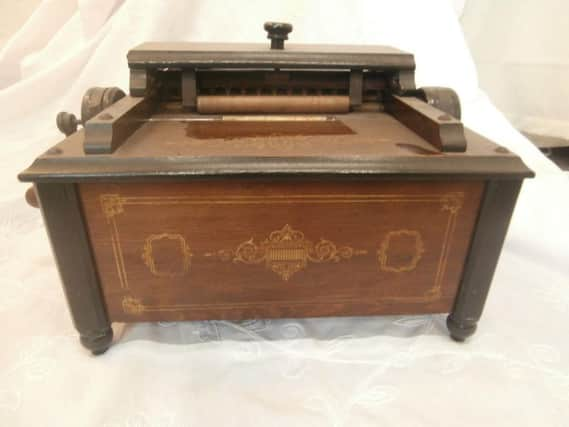Don't strike the wrong note with musical antiques


I hope you enjoyed Valentine’s Day last week and were treated to something special by a loved one (or secret admirer). They say if music be the food of love…play on, so this week’s collectables are two gorgeous musical items.
Since the first primitive horns, music has been a part of our lives and, despite the developments in modern music technology, there is still nothing like the sound of the real thing.
Advertisement
Hide AdAdvertisement
Hide AdHowever, collecting old, musical pieces can be full of pitfalls for the novice – if you don’t know anything about music, you’re very likely to strike the wrong note!
The most common musical instruments in antiques centres and shops are upright pianos. Derived from the harpsichord, pianos first appeared at the very beginning of the 18th Century.
By the 19th Century, they were popular home instruments and young ladies were expected to be accomplished players. An old piano is highly likely to need retuning, so expect to add something to the purchase price. Upright pianos are available for as little as £100.
A more space-saving pastime would be collecting music boxes. There are lots of these available and some, like this one, are really striking. It is on sale for £495. Slightly more affordable is this beautiful metronome, which is on sale for £95.
Advertisement
Hide AdAdvertisement
Hide AdThe metronome is used by musicians to help keep a steady tempo. For the player it gives a clear sense of timing and speed, and for composers an indication of the intended tempo for the piece. Producing regular clicks, some metronomes, like this one, include a synchronised visual motion, like a pendulum swing.
Initially called a ‘chronometer’, the metronome has its origins in the late 16th Century when Galileo observed the consistency of pendulum swings. This eventually led to Etienne Loulié’s first adjustable chronometer in 1696.
However, it was silent, meaning musicians had to watch the pendulum like a conductor’s baton– not terribly practical. The first mechanical metronome, with its iconic ‘tick’, was invented by Dietrich Nikolaus Winkel in Amsterdam in 1814, but not patented until Johann Maelzel added the familiar scale in 1815.
In a time when you can get metronome ‘apps’ for your smartphone, I think the elegant engineering of a beautiful rosewood metronome, is very hard to, shall we say, ‘beat’.